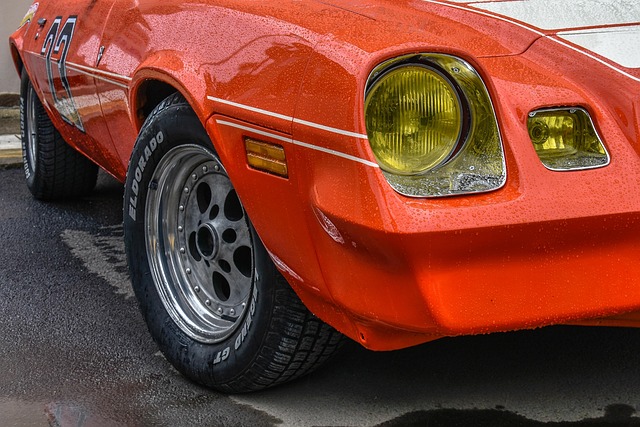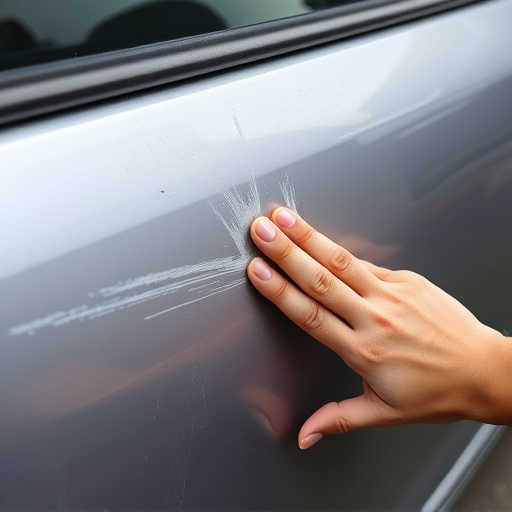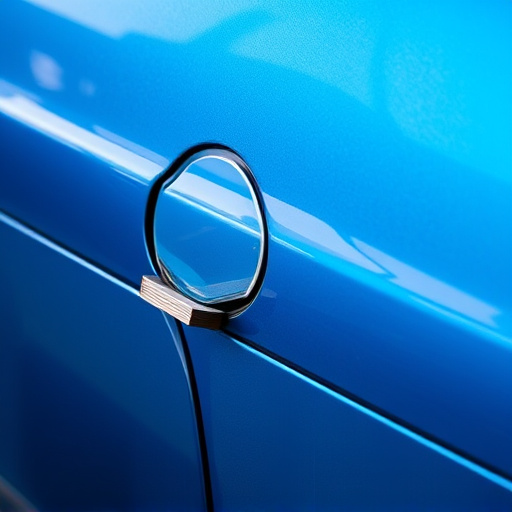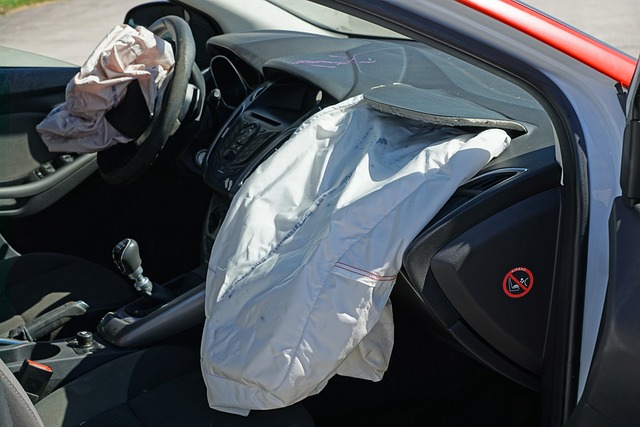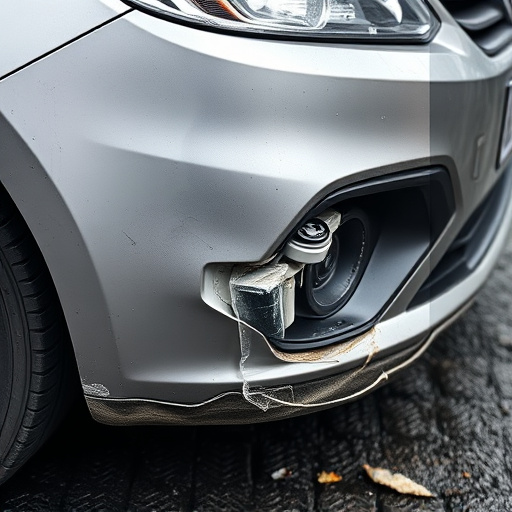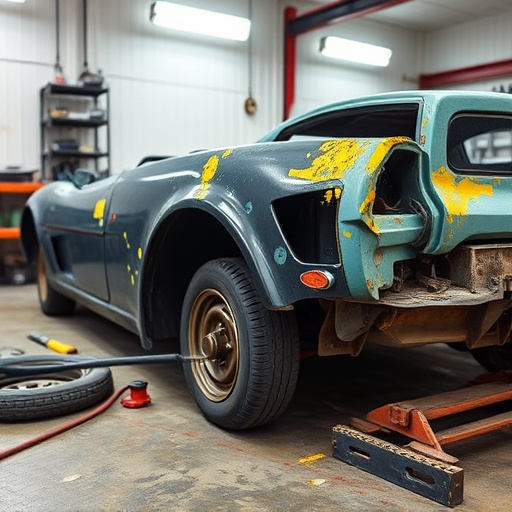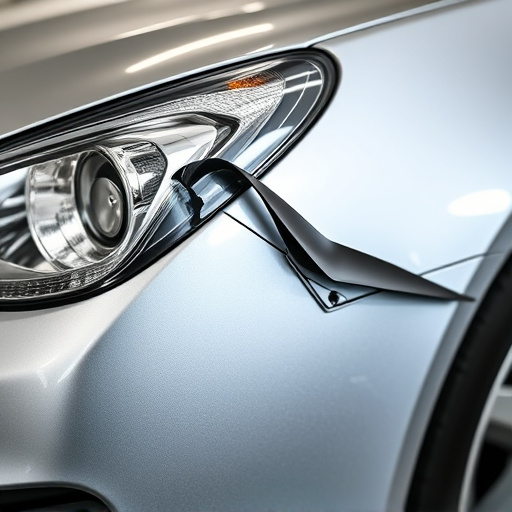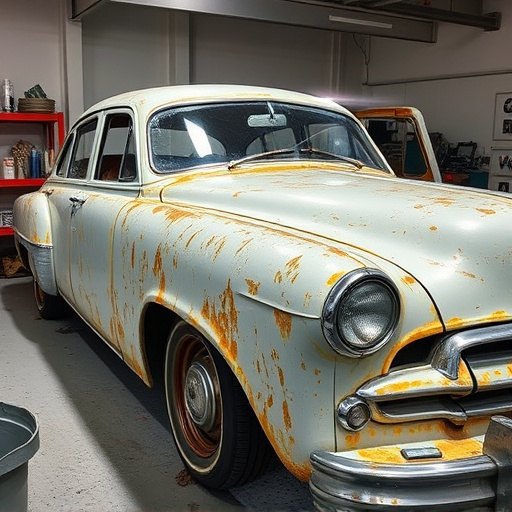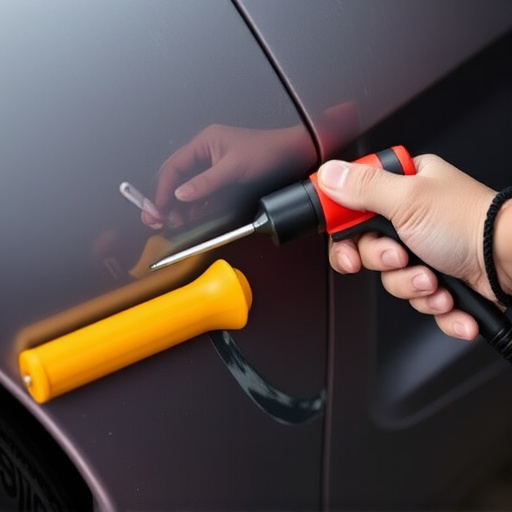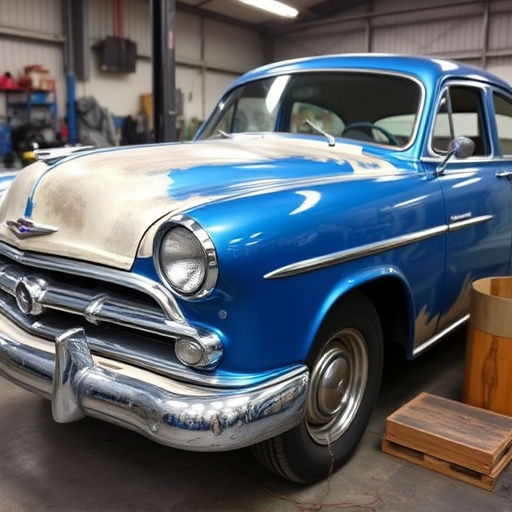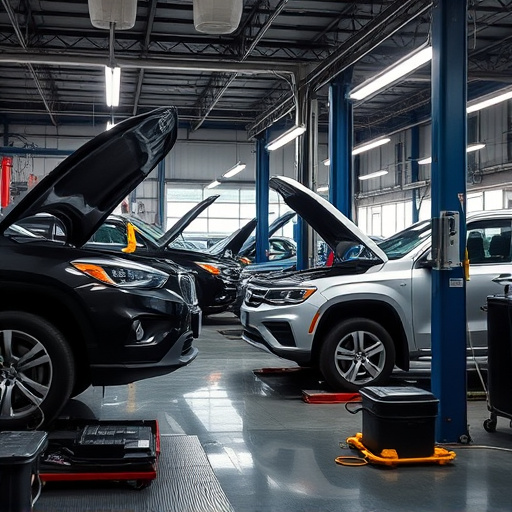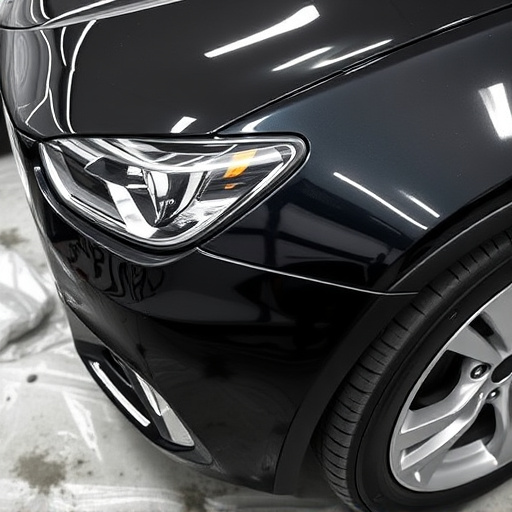In automotive collision centers, accurate computerized paint matching is crucial for client satisfaction. Clear coat, a transparent protective layer, enhances durability and aesthetics while ensuring color consistency under varying lighting. Understanding its interaction with base layers allows technicians to optimize workflow and achieve flawless results using specialized tools. Proper application of clear coat, meticulous attention to detail, and strict quality control are essential for achieving precise matches and delivering vehicles restored to 'as new' condition.
In the realm of automotive refinishing, clear coat plays a pivotal role in achieving precise, computer-controlled paint matching. This innovative coating not only enhances the durability of the finish but significantly influences the final color outcome. Understanding how clear coat interacts with advanced painting systems is paramount for professionals aiming to deliver flawless results. By exploring its impact on color precision and consistency, along with best practices for optimization, this article deciphers the secrets behind successful computerized paint matching.
- Understanding Clear Coat's Role in Paint Matching
- Impact on Color Precision and Consistency
- Optimizing Results: Techniques and Best Practices
Understanding Clear Coat's Role in Paint Matching
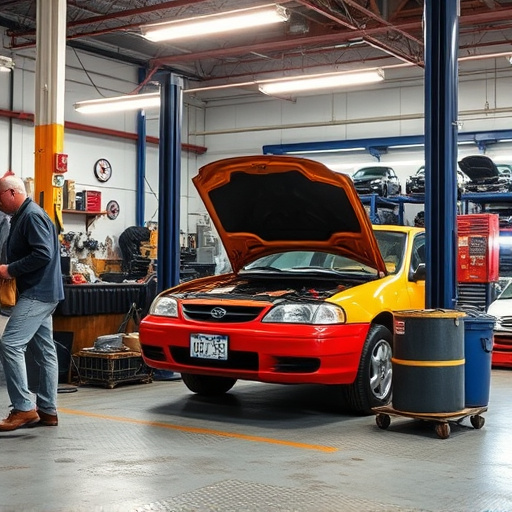
In the realm of automotive body shop services and collision center operations, achieving precise computerized paint matching is paramount to customer satisfaction. Clear coat plays a pivotal role in this process by serving as the final protective layer over the base paint. Its primary function is to enhance the durability and aesthetics of the painted surface while ensuring color consistency across different lighting conditions. By understanding how clear coat interacts with the underlying layers, body shop technicians can optimize their workflow, leveraging specialized tools and expertise to deliver flawless results.
This transparent coating not only adds a glossy finish but also serves as a crucial barrier against environmental factors like UV radiation and oxidation. When it comes to computerized paint matching, the clear coat’s optical properties significantly influence the final color match. Technicians must account for its refractive index and thickness to accurately calibrate the system, ensuring that the digital color profile matches the physical outcome after application. This meticulous attention to detail is what sets apart a quality body shop service from its competitors, providing customers with a restored vehicle that looks as good as new.
Impact on Color Precision and Consistency
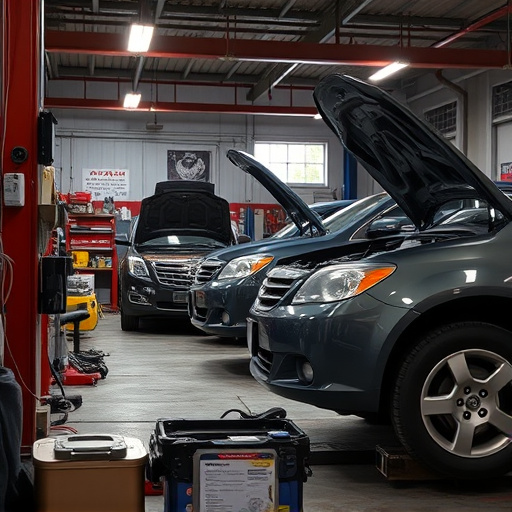
The application of a clear coat can significantly influence the precision and consistency of computerized paint matching outcomes. This transparent top layer serves as the final touch in the paint restoration process, designed to protect the underlying color and enhance its appearance. However, its impact extends beyond aesthetic benefits. The clear coat acts as a critical component in achieving exact color matches, particularly when dealing with complex color profiles or subtle nuances. Any variation in the clear coat’s composition or application can introduce slight deviations in the final shade, impacting the overall consistency of the computerized paint matching process.
For automotive repair services that rely on precise paint matching, such as in automotive body work or auto glass repair, understanding this dynamic is paramount. Even minor inconsistencies in clear coat application can lead to noticeable color disparities, especially under certain lighting conditions. Therefore, technicians must employ meticulous techniques and adhere to strict quality control measures to ensure the clear coat accurately mirrors the original color specification, ultimately delivering superior results in every repair project.
Optimizing Results: Techniques and Best Practices
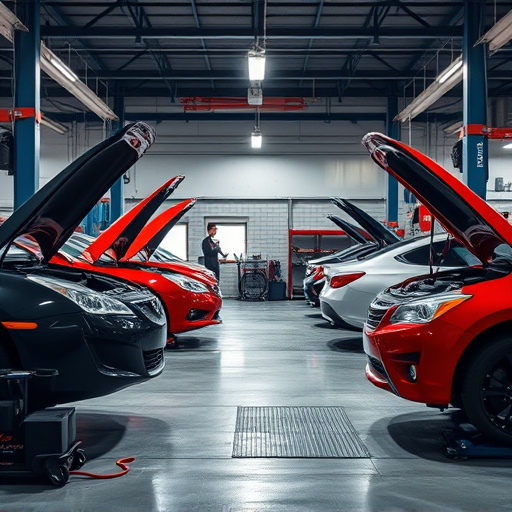
To optimize results with computerized paint matching, auto body shops and collision repair centers should employ best practices that ensure precision and accuracy. Start by preparing the surface thoroughly; this includes degreasing, sanding, and priming to create a smooth base for painting. Using high-quality clear coats designed for optimal adhesion will significantly enhance the final outcome.
Next, calibrate and maintain your equipment regularly. Ensure color sensors are accurately set and aligned with the latest industry standards. Additionally, train your staff on proper procedures, emphasizing consistent application techniques. By adhering to these guidelines, car paint services can achieve more precise matches, resulting in top-notch finishes that meet or exceed customer expectations.
Clear coat plays a pivotal role in achieving precise and consistent results during computerized paint matching. By understanding its impact on color replication, professionals can optimize processes to deliver superior finishes. Adhering to best practices ensures accurate color matching, enhancing the overall quality of automotive repairs and refinishing projects. Incorporating these techniques can revolutionize the way clear coat contributes to the success of computerized paint matching outcomes.

